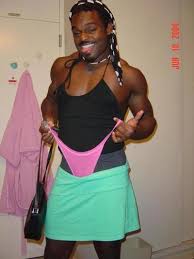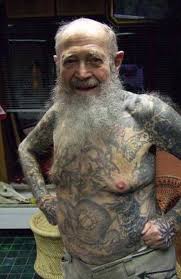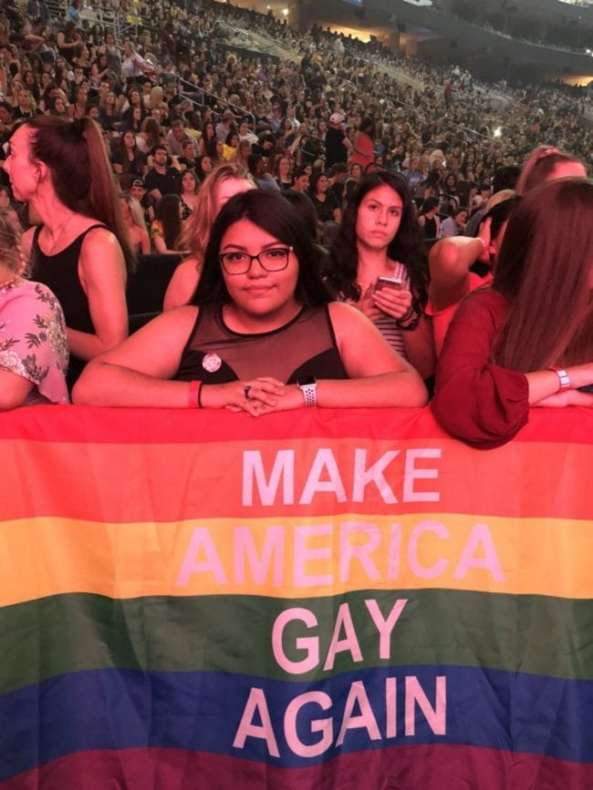When I announced I would be traveling to the U.S. to participate in some book festivals to an American friend who had recently visited there following almost a decade of living overseas, her response was thought-provoking. “Tak, America has changed,” she warned, “everyone’s gay!” Although I was aware that former-President Barack Obama was an advocate of gay rights, I have to admit that I was surprised at how much the LGBT landscape has developed.
I flew into JFK International Airport and caught a taxi to an address in Astoria, Queens. I was able to reserve a room on the Air BnB site, not far from Central Park by subway. As I stepped onto the porch, I noticed the LGBT flag hanging above the door, realizing the proprietor of the apartment was gay. On my first night, I took a shower and forgot the combination-number to unlock my bedroom door. Wrapped in a bath towel, with all of my stuff locked away in my room, I was forced to knock on other tenants’ doors in the same suite. I was hoping I could use someone’s phone to check my email for the combination.
Fortunately, there was someone on the other side of the second door I knocked on: a melanin-rich brother with locs draped over his shoulder. Having already gone to bed, as he exited his dark room and stepped into the light of the living room, I noticed something was a bit different from what I had anticipated. At first, I thought it was the simple matter of his locs being dyed blue. However, upon further inspection, I realized that what I thought was a wife-beater T-shirt turned out to be the top-half of a full-length night-gown. Then reality sank in: Oh my god, this guy’s a cross-dresser.
“Hi, my name’s Ruby,” he said in a voice sort of deep for someone named “Ruby.”

“Umm, good evening,” I rattled, trying not to seem surprised at his choice of apparel. After explaining my situation, Ruby was good enough to allow me to use his (her?) phone. I have never been “homophobic” (assuming that is a real word), but it was sort of disconcerting to sit there wrapped in nothing but a bath towel while a guy in a woman’s nightgown gawked at me with a big Kool-Aid smile. Long-story-short, once I got dressed, I returned to the living room to thank Ruby. In spite of my resolute heterosexual stance, Ruby was determined to hit on me anyway.
The following day I found Ruby had left me a note prior to checking out. This was the last line: “Let’s spend some time together…I can show you some things.”
Now I know how sexually harassed women feel!
Along with this new, millennial open-mindedness, I also noticed a mixing of the races like I’d never seen before. As a child, having been the victim of much verbal-haranguing for my “mixed race” status by classmates and friends—both black and white—at first, I received this revelation with open arms. Nevertheless, it was not long before I noticed that just as I mention in book 1 of Gaikokujin – the Story, the blurring of the racial lines consistently involved melanin-rich folks losing their culture / language and replacing it with behaving and talking like “white people.”

Again, if this were a genuine melting-pot, many ethnicities’ characteristics would be represented: not just the idiosyncrasies of the ruling class.
With the boom of technological devices in the 21st century, individualism is increasing. Instead of communicating to those standing nearby, many folks opt to talk into their I-phones to friends who, in some cases, may be in other cities or even foreign countries. In spite of this, much of the friendly, talkative spirit of the average New Yorker continues to thrive as I was able to strike up interesting conversations with bus drivers and store clerks alike about the latest goings-on in the “City that never Sleeps.” Also, the neighborly mannerisms in the South seem to still exist as I was greeted “Good morning” by many smiling people during my stays in Virginia, North Carolina, and Georgia.
Still, it was a bit daunting to see the lack of children playing outside or even walking around. Parents, it seems, have been tasked with the chore of being their children’s personal Uber drivers. Another friend of mine, Dr. Griselda Thomas, who is a professor at Kennesaw State University, detailed how the kids of this generation are losing out on many of life’s lessons simply by not walking to school. “Children of my generation learned the fundamentals of fitting into society; you know, getting along with others and understanding where “your lane” is from basic interactions with our peers like walking to school.”
Progress is just that—moving ahead. However, the question remains in the process of discarding the ‘old’ and bringing in the ‘new’ are we , in some ways, “throwing the baby out with the bathwater?”

Lastly, I have to comment on the body-art I saw: lots of tattoos! Although Japan is at the forefront of much advancement, this is one arena where they lag far behind. Due mostly to the stigma that attaches tattoos to the criminal underworld—the yakuza—any Japanese who relish body-art will usually relegate them to areas which can easily be hidden underneath clothing. I may be exaggerating but it seemed that during my stay in the U.S. most people I crossed paths with on the street, or at the mall, had at least one visual tattoo. No doubt about it, some of the body-art was impressive indeed; the details and colors very vivid and powerful. Why, I even saw senior citizens sporting tattoos…

However, in some of these cases, I had to wonder when they got them.
Being a student of the Journey called Life, I have learned that the only constant in this world is change itself; so I embrace it with open arms. The Chinese philosopher, Lao Tzu, brushes it down nicely.
“Life is a series of natural and spontaneous changes. Don’t resist them; that only creates sorrow. Let reality be reality. Let things flow naturally forward in whatever way they like.”
― Lao Tzu
Takuan Amaru is the author of the trilogy, Gaikokujin – The Story.

